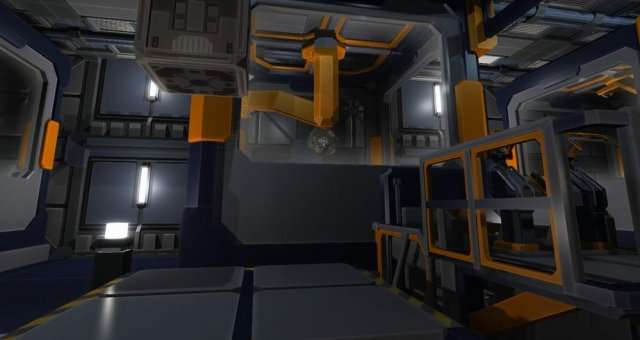
This is a small guide about Engines in Interstellar Rift. I will try to list any data on them in order to figure out what is their reliability.
Mass Penalty
All credit goes to John Nada!
The base value for Top Speed is 500 m/s, but every ship get a Mass Penalty.
This penalty is a linear function: TopSpeed = 500 – ( 0.175 x ShipMass ) for the mass range between 2k and 2 million.
Examples:
- A 1 million tons ship will lose 175 and reach 325 as Top Speed, if it had enough engines (At least 7 Tech 3 Engines).
- A 2 million tons ship will lose 350 and reach 150 as Top Speed. This is the maximum Mass Penalty value. Any bigger ship can still reach 150 m/s it had enough engines on it.
Engine’s Values
Here I will expose the engines stats (Mass, Thrust and Drain) to compare them.
In-game Engine’s Mass values (Some are still wrong, I reported that several weeks ago):
- T0 – Class 3: 40
- T0 – Class 2: 120
- T0 – Class 1: 160
- T1 – Tech 2: 800
- T2 – Tech 3: 7,200
Both Tech Engines need an inside room that add weight to the ship. Tech 2 is 2x2x2 (2,200 tons) and Tech 3 is 3x3x6 (6,300 tons).
Actual Engine’s Mass values (Watch the Ship weight when playing with them in the Editor):
- T0 – Class 3: 40
- T0 – Class 2: 120
- T0 – Class 1: 160
- T1 – Tech 2: 600 + 2,200 = 2,800
- T2 – Tech 3: 7,570 + 6,300 = 13,870
Engine’s Thrust values:
- T0 – Class 3: 3250
- T0 – Class 2: 6750
- T0 – Class 1: 14,000
- T1 – Tech 2: 137,500
- T2 – Tech 3: 1,450,000
Engine’s Thrust values added to the ship per ton of the Engine’s Weight:
- T0 – Class 3: 81
- T0 – Class 2: 56
- T0 – Class 1: 87
- T1 – Tech 2: 172
- T2 – Tech 3: 201
Actual Engine’s Thrust values added to the ship per ton of the actual Engine’s Weight:
- T0 – Class 3: 81
- T0 – Class 2: 56
- T0 – Class 1: 87
- T1 – Tech 2: 49
- T2 – Tech 3: 104
Engine’s Drain:
- T0 – Class 3: 1
- T0 – Class 2: 2
- T0 – Class 1: 4
- T1 – Tech 2: 40
- T2 – Tech 3: 325
Engine’s Thrust by Drain unit:
- T0 – Class 3: 3,250
- T0 – Class 2: 3,375
- T0 – Class 1: 3,500
- T1 – Tech 2: 3,437
- T2 – Tech 3: 4,461
Comparative Math
As an Engine is there to move your ship and these engines add some weight to move too, it appears that Class 3 and Tech 2 are really bad (56 and 49 of thrust per ton of weight added), Class 1 and 3 are better (87 and 81) and Tech 3 is good (104)
9.82 Class 1 engines give to your ship the same thrust as one Tech 2 Engine:
- Total Mass added is 1571 (Tech 2 is 2800).
- Total Drain of these Class 1 engines is 39 (Tech 2 is 40).
- So a cluster of Class 1 Engines is better than a Tech 2 Engine.
10.54 Tech 2 engines give to your ship the same thrust as one Tech 3 Engine:
- Total Mass added is 29,527 (Tech 3 is 13,870).
- Total Drain of these Tech 2 Engines is 422 (Tech 3 is 325).
- So a cluster of Tech 2 is worst than a Tech 3 Engine.
103.57 Class 1 Engines give to your ship the same thrust as one Tech 3 Engine:
- Total Mass added is 16,571 (Tech 2 is 13,870).
- Total Drain of these Class 1 engines is 414 (Tech 2 is 325).
- So a cluster of Class 1 Engines is worst than a Tech 3 Engine.
Facts
You can divide the Engine’s Thrust Value by 10 to guess approximately what Mass it can move at Top Speed. So one Tech 3 Engine can move a 145k ship at max speed. This trick can help you to know how much engines you need for your ship. Don’t forget that Pads, Containers and Ship Storage will add way much weight to your ship when you fill them.
Class 3 Engine is better than you can first guess and you can easily hide them. It’s a good engine for small ship. Two examples of hidden engines on ship I made:
- NC Shuttle: 498 m/s (Mass 9.45k / Max thrust: 66k). Mass is so low that you don’t need so many engines to reach the Top Speed (Mass is so low that this ship can open and pass through Rift for 0 Xanthium). Link to the Workshop.
- Tie Bomber: 459 m/s (Mass: 29.7k / Max thrust: 221k). As you see this 30k ship need 300k Max thrust to reach the Top Speed and I put only 221k because lack of room. I hidden all the Class 3 engines in both wings. Link to the Workshop.
Class 2 Engine is genuinely very bad and useless in IsR, I used them once to make an only Iron-Copper Ship who doesn’t make any sense as you can craft Steel Ingots very easily. As Steel is not that hard to get when you start the game and knowing that Class 2 Engine stats are really very bad, I suggest you to never use them.
Class 1 Engine is the one you can afford and put everywhere. If you want to reach the Max Speed, you will need unfortunately a whole bunch of them. Here an example of one T0 starting ship I made to grind faction reputation with most of the engines hidden:
- NC Monitor: 491 m/s (Mass 48.12k / Max thrust: 509k). Max thrust is 10 times the Mass, so it reaches its Top Speed. Link to the Workshop.
Tech 2 engine is not actually better than Class 1 ones if you take the inside room weight drawbacks, it’s why I rarely use it (Only for design purpose).
As you see the Tech 3 Engine is more energy efficient (4,461) than the other engines who share roughly the same value (3,250 to 3,500). Without any design concerns, if you planning to build a ship over 150k mass and if resources doesn’t matter to you, use Tech 3 Engines. The biggest Engine of the game is actually the better. The outside nozzle of this engine take 3x3x5 titles, so you can align several of them in line and only expose the last one.

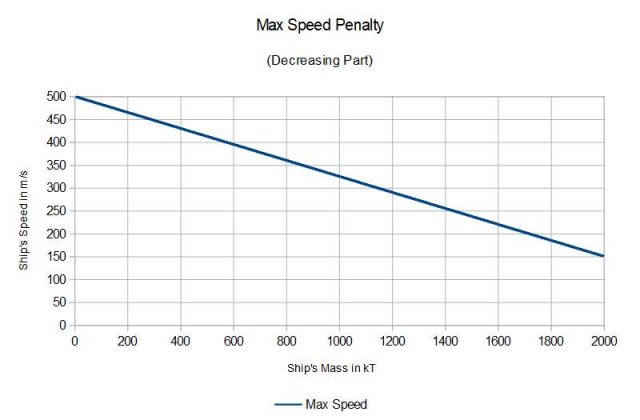
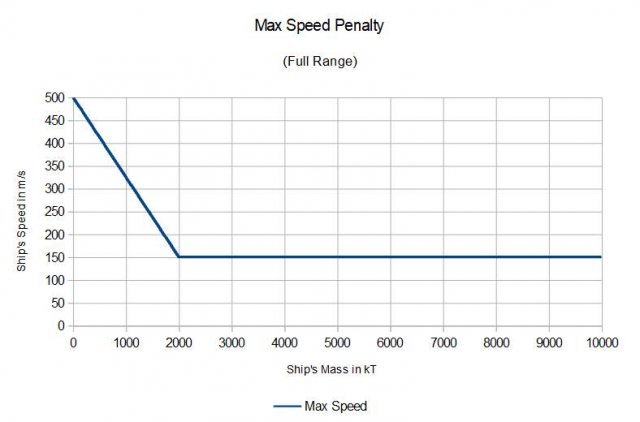

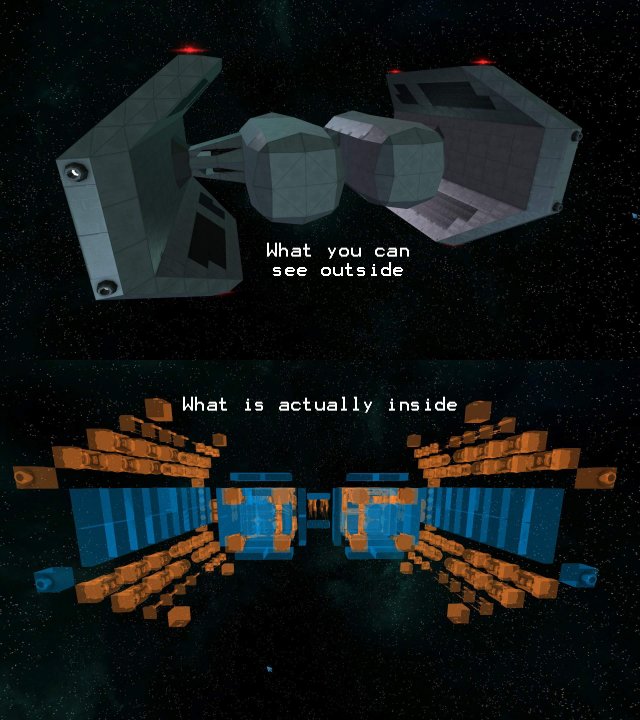
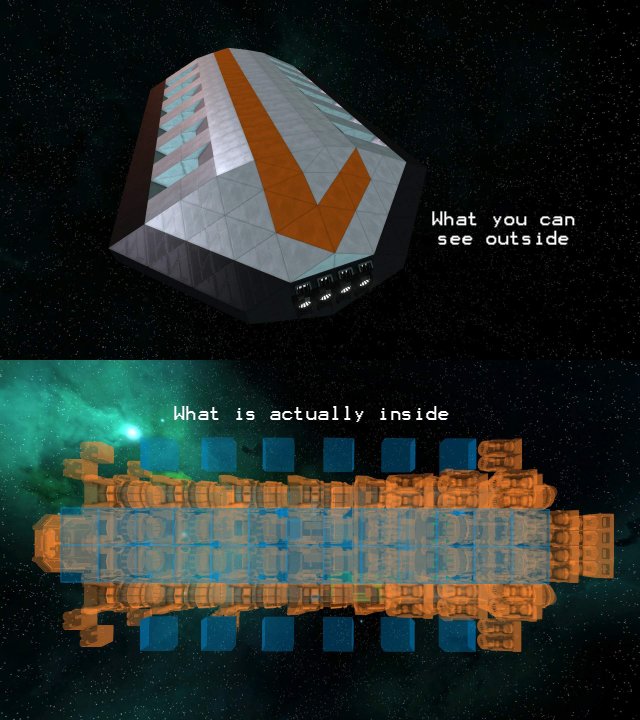



Be the first to comment